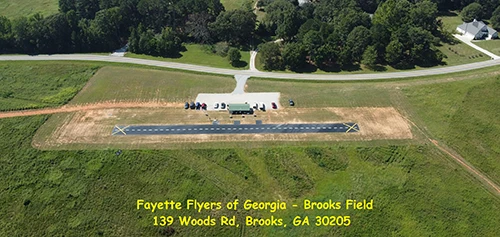Due to insurance requirements, in order to fly from this field, one must be a Fayette Flyers Club member in good standing (dues paid), or the invited guest of a Club member in good standing and have in their possession their current Academy of Model Aeronautics (AMA) membership card.
